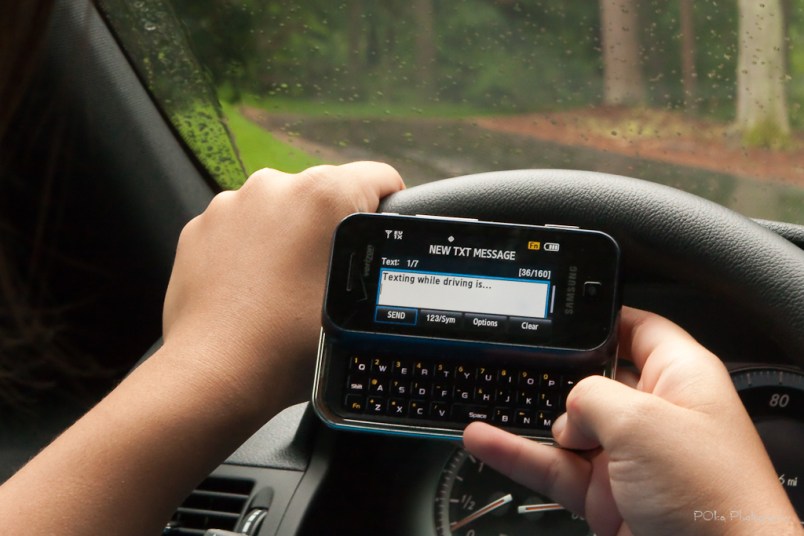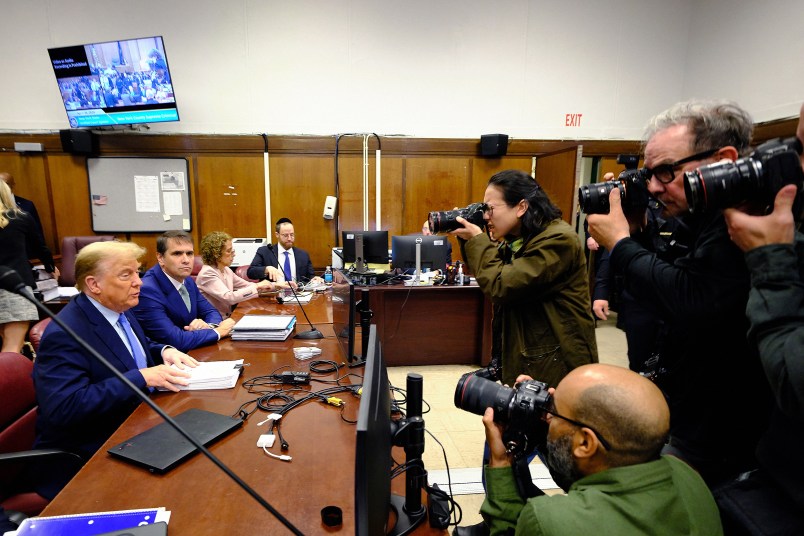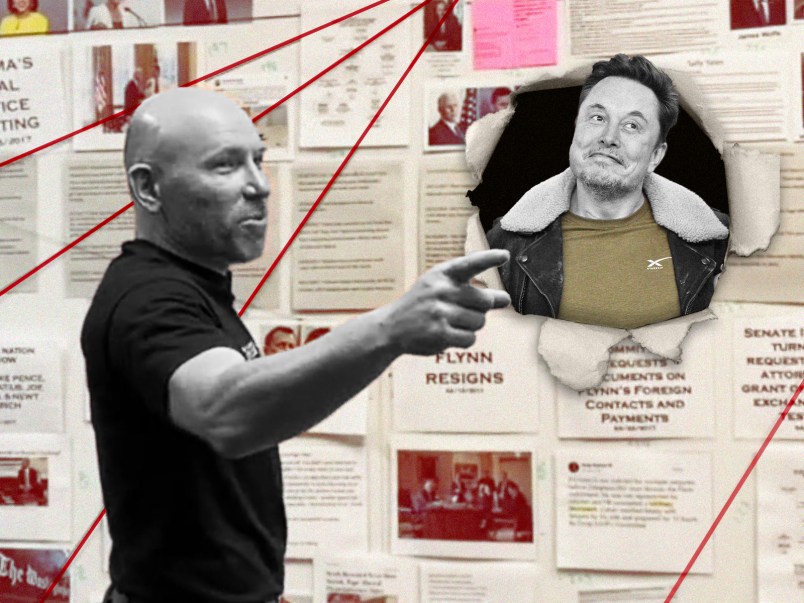President Obama signed an executive order today banning federal employees from texting while driving on official business.
“With nearly 3 million civilian employees, the Federal Government can and should demonstrate leadership in reducing the dangers of text messaging while driving,” the order reads.
The order prohibits government workers from texting while driving government vehicles, or while driving privately owned vehicles while on government business, or while using a government-owned phone or other electronic device.
Executive agencies have 90 days to comply. They also must “encourage” contractors to follow the rules, and are allowed to make exemptions for certain employees or situations.
Read the full text of the order, as released by the White House, after the jump.
FEDERAL LEADERSHIP ON REDUCING TEXT MESSAGING WHILE DRIVING
By the authority vested in me as President by the
Constitution and the laws of the United States of America,
including section 7902(c) of title 5, United States Code, and
the Federal Property and Administrative Services Act of 1949, as
amended, 40 U.S.C. 101 et seq., and in order to demonstrate
Federal leadership in improving safety on our roads and highways
and to enhance the efficiency of Federal contracting, it is
hereby ordered as follows:
Section 1. Policy. With nearly 3 million civilian
employees, the Federal Government can and should demonstrate
leadership in reducing the dangers of text messaging while
driving. Recent deadly crashes involving drivers distracted by
text messaging while behind the wheel highlight a growing danger
on our roads. Text messaging causes drivers to take their eyes
off the road and at least one hand off the steering wheel,
endangering both themselves and others. Every day, Federal
employees drive Government-owned, Government-leased, or
Government-rented vehicles (collectively, GOV) or privately-owned
vehicles (POV) on official Government business, and some Federal
employees use Government-supplied electronic devices to text or
e-mail while driving. A Federal Government-wide prohibition on
the use of text messaging while driving on official business or
while using Government-supplied equipment will help save lives,
reduce injuries, and set an example for State and local
governments, private employers, and individual drivers.
Extending this policy to cover Federal contractors is designed
to promote economy and efficiency in Federal procurement.
Federal contractors and contractor employees who refrain from
the unsafe practice of text messaging while driving in connection
with Government business are less likely to experience
disruptions to their operations that would adversely impact
Federal procurement.
Sec. 2. Text Messaging While Driving by Federal Employees.
Federal employees shall not engage in text messaging (a) when
driving GOV, or when driving POV while on official Government
business, or (b) when using electronic equipment supplied by
the Government while driving.
Sec. 3. Scope of Order. (a) All agencies of the executive
branch are directed to take appropriate action within the scope
of their existing programs to further the policies of this order
and to implement section 2 of this order. This includes, but
is not limited to, considering new rules and programs, and
reevaluating existing programs to prohibit text messaging while
driving, and conducting education, awareness, and other outreach
more
(OVER)
2
for Federal employees about the safety risks associated with
texting while driving. These initiatives should encourage
voluntary compliance with the agency’s text messaging policy
while off duty.
(b) Within 90 days of the date of this order, each
agency is directed, consistent with all applicable laws and
regulations: (i) to take appropriate measures to implement
this order, (ii) to adopt measures to ensure compliance with
section 2 of this order, including through appropriate
disciplinary actions, and (iii) to notify the Secretary of
Transportation of the measures it undertakes hereunder.
(c) Agency heads may exempt from the requirements of
this order, in whole or in part, certain employees, devices, or
vehicles in their respective agencies that are engaged in or
used for protective, law enforcement, or national security
responsibilities or on the basis of other emergency conditions.
Sec. 4. Text Messaging While Driving by Government
Contractors, Subcontractors, and Recipients and Subrecipients.
Each Federal agency, in procurement contracts, grants, and
cooperative agreements, and other grants to the extent authorized
by applicable statutory authority, entered into after the date
of this order, shall encourage contractors, subcontractors, and
recipients and subrecipients to adopt and enforce policies that
ban text messaging while driving company-owned or -rented
vehicles or GOV, or while driving POV when on official Government
business or when performing any work for or on behalf of the
Government. Agencies should also encourage Federal contractors,
subcontractors, and grant recipients and subrecipients as
described in this section to conduct initiatives of the type
described in section 3(a) of this order.
Sec. 5. Coordination. The Secretary of Transportation, in
consultation with the Administrator of General Services and the
Director of the Office of Personnel Management, shall provide
leadership and guidance to the heads of executive branch agencies
to assist them with any action pursuant to this order.
Sec. 6. Definitions.
(a) The term “agency” as used in this order means an
executive agency, as defined in 5 U.S.C. 105, except for the
Government Accountability Office.
(b) “Texting” or “Text Messaging” means reading from or
entering data into any handheld or other electronic device,
including for the purpose of SMS texting, e-mailing, instant
messaging, obtaining navigational information, or engaging in
any other form of electronic data retrieval or electronic data
communication.
(c) “Driving” means operating a motor vehicle on an active
roadway with the motor running, including while temporarily
stationary because of traffic, a traffic light or stop sign, or
otherwise. It does not include operating a motor vehicle with or
without the motor running when one has pulled over to the side
of, or off, an active roadway and has halted in a location where
one can safely remain stationary.
more
3
Sec. 7. General Provisions. (a) Nothing in this order
shall be construed to impair or otherwise affect or alter:
(i) Authority granted by law or Executive Order to an
agency, or the head thereof;
(ii) Powers and duties of the heads of the various
departments and agencies pursuant to the Highway Safety Act
of 1966, as amended, 23 U.S.C. 402 and 403, section 19 of
the Occupational Safety and Health Act of 1970, as amended,
29 U.S.C. 668, sections 7901 and 7902 of title 5,
United States Code, or the Federal Property and
Administrative Services Act of 1949, as amended, 40 U.S.C.
101 et seq.;
(iii) Rights, duties, or procedures under the National
Labor Relations Act, 29 U.S.C. 151 et seq.; or
(iv) Functions of the Director of the Office of Management
and Budget relating to budgetary, administrative, or
legislative proposals.
(b) This order shall be implemented consistent with
applicable law and subject to the availability of appropriations.
(c) This order is not intended to, and does not, create any
right or benefit, substantive or procedural, enforceable at law
or in equity, by any party against the United States, its
departments, agencies, or entities, its officers, employees, or
agents, or any other person.









